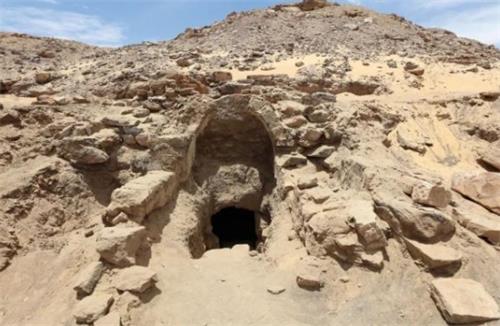
In 2024, the worldwide archaeological community was filled with enthusiasm as numerous significant and astonishing findings emerged, gradually uncovering the secrets that had long concealed ancient civilizations.These findings not only opened up fresh vantage points but also propelled the frontiers of research into human history and culture to new heights. Starting from the majestic throne of the Moche Queen found at the Pania Arca site in Peru, moving on to the sunken remnants of a stone wall in the Baltic Sea, and including the fascinating pairing of dinosaur footprints and rock art in Brazil's Sousa Basin, these archaeological gems have shed light on the diverse and complex nature of ancient communities. They have provided us with deeper insights into how our early forebears lived and the social frameworks that structured their lives.
Archaeologists chanced upon a throne room that had been painstakingly constructed for the Moche queen. This room was decorated with murals that vividly illustrated moments where the queen was sitting on her throne and welcoming guests. This unexpected discovery shattered conventional notions of gender roles in ancient societies, providing irrefutable evidence of the elevated power and status enjoyed by women within Moche culture. Researchers delved deep into a detailed analysis of the throne itself, as well as the surrounding murals and sculptures, in a bid to unearth the political structure and the extent of gender equality in that bygone era, thereby enriching our knowledge of this ancient civilization.
At the same time, in Aswan, Egypt, the process of archaeological digging brought to light a large and significant burial complex. This complex housed the remains of 46 individuals, spanning across genders and ages, dating back to the period between the 2nd century BCE and the 2nd century CE. The tombs boasted a unique architectural design, with over 400 burial sites, and within them lay a trove of valuable artifacts, including intricately painted boxes and delicate small sculptures. This discovery served as a valuable window into the burial customs of ancient Egypt, adding yet another layer to our comprehensive understanding of this ancient civilization.
Comprising over 300 large stones and 1,300 smaller ones, the wall stood at an approximate height of three feet. Archaeologists theorize that this stone wall was erected by prehistoric hunters as a strategic trap for ensnaring large game such as reindeer. This discovery challenged the long-held beliefs about the architectural capabilities of prehistoric humans, shining a light on the survival ingenuity and distinctive building techniques employed by our ancient forebears during the waning days of the Ice Age.
In Brazil's Sousa Basin, a collaborative effort between archaeologists and paleontologists led to the discovery of a site of unparalleled significance. Here, they unearthed a wealth of dinosaur footprints, belonging to various species such as sauropods, theropods, and therizinosaur dinosaurs, along with rock art featuring intricate geometric patterns. Research indicates that these rock paintings were created between 9,000 and 3,000 years ago, remarkably close in age to the dinosaur footprints. This discovery provided invaluable clues for exploring the potential interactions between dinosaurs and ancient humans, expanding the horizons of scientists' understanding of prehistoric ecosystems and the evolution of human culture.
Beyond these major breakthroughs, 2024 witnessed a host of other significant archaeological accomplishments. In the Canadian Arctic, scientists utilized DNA analysis to glean insights from the remains of a 19th-century expedition team. In Australia, researchers made the discovery of Ice Age Aboriginal remains. Each of these discoveries offered fresh perspectives, enabling us to deepen our comprehension of the vast diversity of ancient civilizations and the social and cultural nuances of early human societies.

Liang Shanbo,Zhu Yingtai
Love Beyond Life and Death: The Eternal Legend of Liang Shanbo and Zhu Yingtai
The love story of Liang Shanbo and Zhu Yingtai originates from an ancient Chinese legend, filled with both sorrow and romance. It tells the tale of a pure love that transcends societal status and traditional constraints, touching the hearts of many.

Atlantis
Atlantis—A Mythical Tale or a Real Lost Civilization?
Atlantis, one of the most famous lost civilizations in the world, continues to hold an important place in the research of historians, archaeologists, and mythologists.

The Mystery of Stonehenge
The Mystery of Stonehenge Unveiled for the First Time: Evidence of Human Activity Found
Stonehenge, located in Wiltshire, southern England, is one of the world’s most famous and mysterious prehistoric sites.


